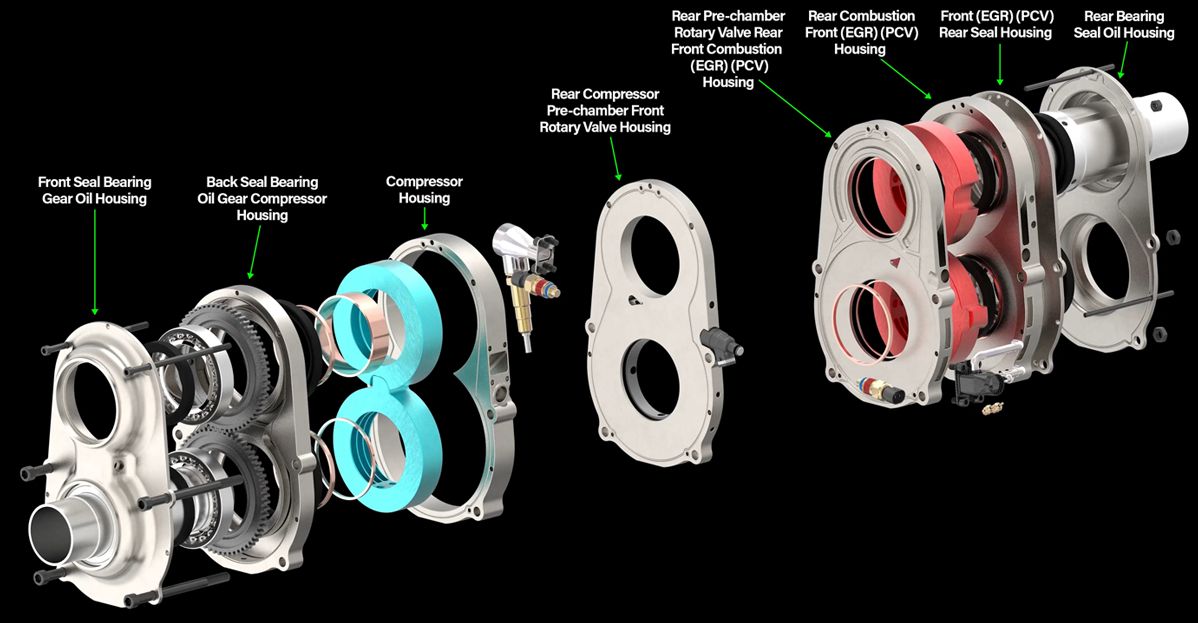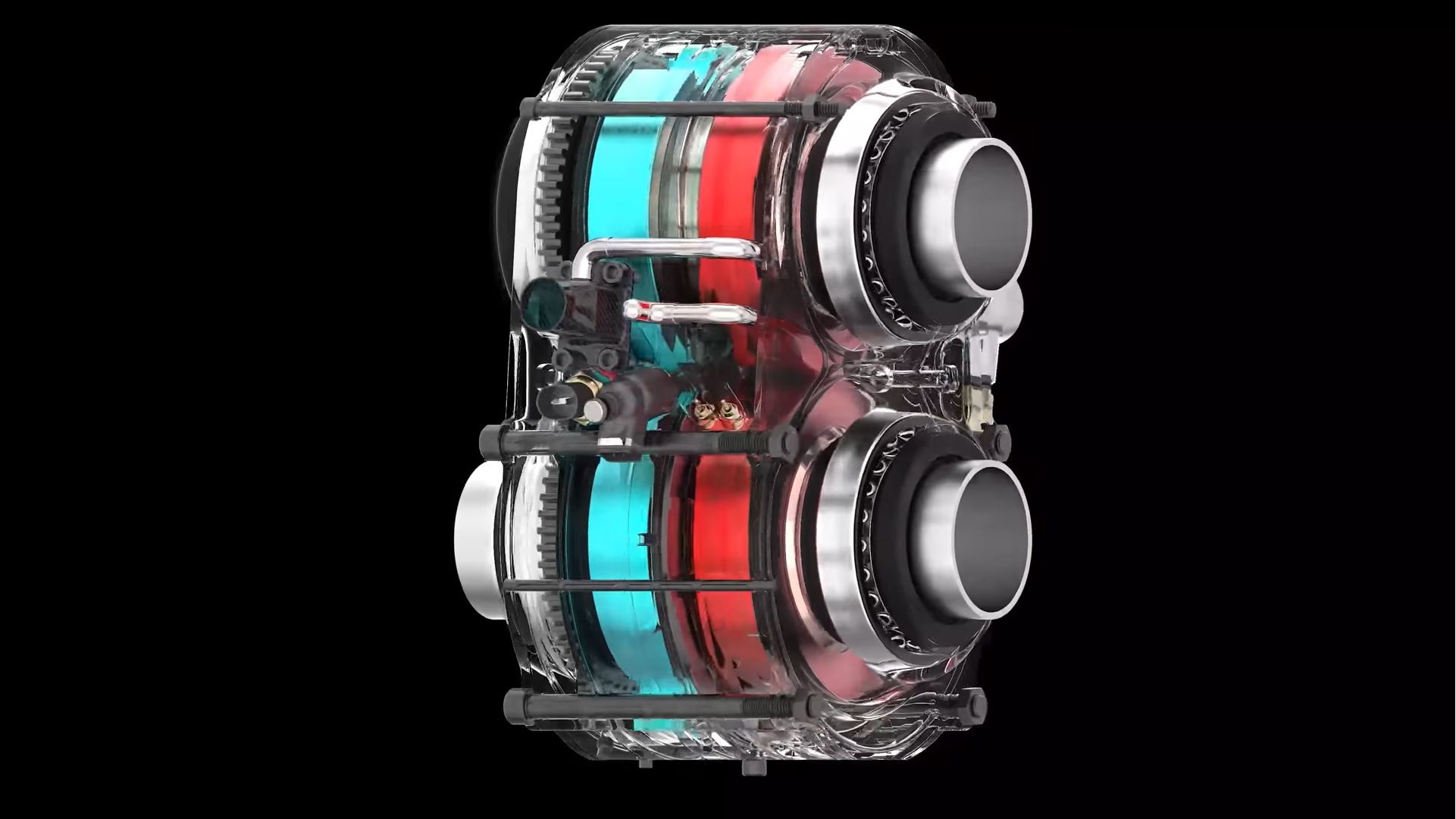By now, it’s obvious that almost all car manufacturers are working hard on a fully electrified model lineup, with some making a full transition by 2030. However, not all manufacturers are putting all their eggs in a single basket and many are looking for alternative, environmentally-friendly energy sources. Porsche is looking at synthetic fuels while Toyota and other companies are once again considering hydrogen, but, arguably, the most revolutionary solution comes from Astron Aerospace, which came up with a very innovative mini-engine, with insane potential, with regards to power output.
The two shafts are connected by a set of synchronized gears, rotating in opposite directions, while four rotors are placed in the two shafts and rotate in pairs. One shaft is responsible for the intake and compression stroke, while the other, is for combustion and exhaust. The Omega 1 engine is based on modular technology, which means that similarly to a traditional rotary engine, you can add modules. A single module weighs just 15.9 kg (35 pounds), produces 160 horsepower and 170 pound-feet (230 Nm), and has a redline of 25,000 RPM, with an idle speed of 1,000 RPM.
Two modules make for 31.8 kg (70 pounds) output of 320 horsepower and 340 pound-feet (460 Nm). Just to put things in perspective, Toyota’s 2JZ GTE engine makes 330 horsepower in its most powerful factory trim and weighs in at a whopping, by comparison, 269 kg (592 pounds), while BMW’s B58 engine has a dry weight of 139 kg (306 pounds).
Omega 1 addresses many of the piston engines’ drawbacks, such as friction, heat, parasitic losses, and pumping losses. Omega 1’s technology allows for almost zero friction, almost no parasitic losses, and almost no moving parts, besides the rotors. Much of the engine’s efficiency comes from its innovative supercharger, capable of working at 200 to 300 PSI (13.8 to 20.7 Bar). To put things in perspective, a normal supercharger usually works at 6 to 35 psi (0.4 to 2.4 Bar).
The “Skip fire” function in Omega 1 is another revolutionary solution. The engine can fire every rotation for when the full power is needed or it can fire every 5.10, or even 50 rotations, depending on how much power is needed. This means that when idling, the engine uses very little fuel, but once you step on the gas, the increased firing rate will provide an almost-instant throttle response.
Astron Aerospace’s Omega 1 engine sounds like the stuff of dreams – very high efficiency, almost no drivetrain losses, simplicity, and the biggest power output pound for pound of any fuel-powered engine. Its creators say the engine can be used in a variety of applications, including cars, motorcycles, and even airplanes. Currently, a variety of alternatives to traditional piston engines are on the table, but this one might just be the game-changer, to outperform electric powertrains.



